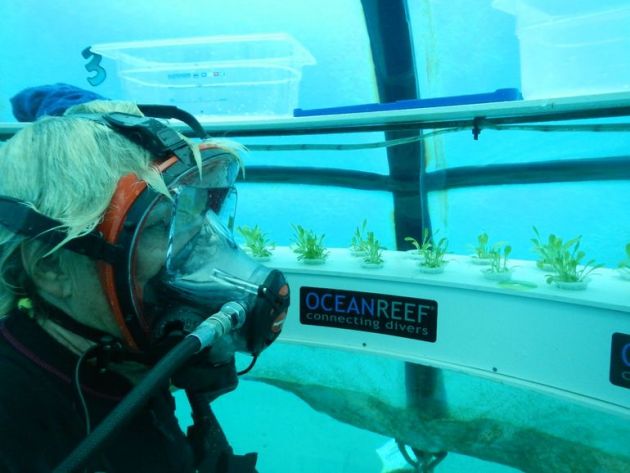Underwater greenhouse Nemo's Garden at the forefront of underwater farming

One consequence of human expansion is the diminishing area for agricultural land. This has prompted some enterprising sectors to come up with creative ways of farming, with people attempting to grow crops in abandoned buildings, on rooftops, small greenhouses and even underground. The Ocean Reef Group takes it further by trying to grow crops underwater.
The project, called Nemo's Garden, uses translucent biospheres that are anchored to the sea floor. The balloon-shaped structures are filled with air before being installed with shelves, cameras and sensors. The shelves are used to grow crops like strawberries and basil. The crops are grown either in soil or through hydroponics.
While some might think the idea is ludicrous, the underwater environment actually helps make for better crops. The temperature underwater remains at 78 degrees with humidity levels at 83 percent. What is more, the shape of this underwater greenhouse causes condensation to develop on the roof which then drips down and waters the plants. High levels of carbon dioxide are also created and acts as fertilizer to the cops, making them grow rapidly.
The cameras installed in Nemo's Garden are used to stream live video so people can watch these divers cum farmers tend to their crops. The sensors collect data (like humidity levels) that are also closely monitored.
Nemo's Garden is the brainchild of Sergio Gamberini, the president of the diving equipment company Ocean Reef Group. He claims to have gotten the idea of growing crops under the sea while he was vacationing in Italy.
According to Gamberini, he tries to "do something that's a little different and to show the beauty of the ocean." He hopes that this project will also inspire young people to dream new dreams.
Nemo's Garden has had its share of ups and downs, but the project is thriving. The garden has been putting out a decent harvest every year. Laboratories who were hired to analyze the garden's output say that there is no discernable difference between the basil grown on land to that grown underwater. However, the basil from Nemo's Garden appears to have a stronger flavor.
Gamberini hopes that the success of his underwater garden will pave the way for a new way of planting that will not harm the environment. Unfortunately, his small company does not have the means to do extensive research yet. But a crowdfunding campaign that he is planning to launch will hopefully change all that.